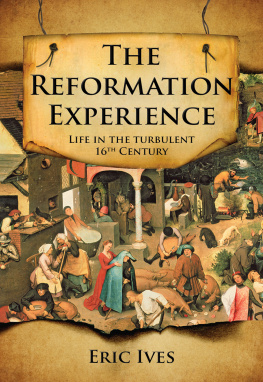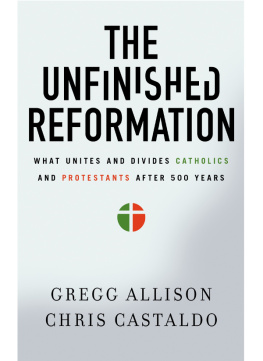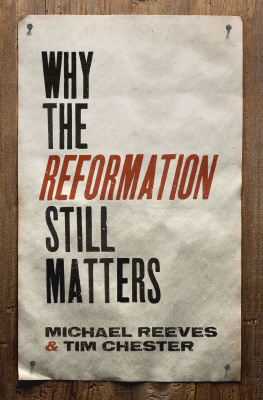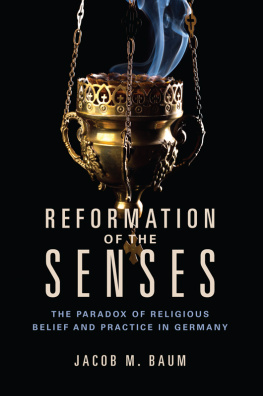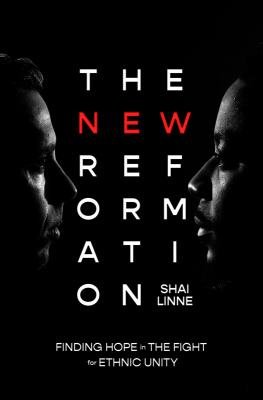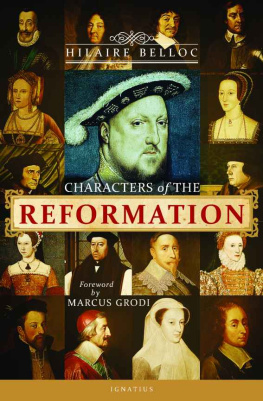T HE R EFORMATION E XPERIENCE
L IVING THROUGH THE TURBULENT 16 TH CENTURY
E RIC I VES

Copyright 2012 Eric Ives
This edition copyright 2012 Lion Hudson
The author asserts the moral right
to be identified as the author of this work
A Lion Book
an imprint of
Lion Hudson plc
Wilkinson House, Jordan Hill Road,
Oxford OX2 8DR, England
www.lionhudson.com
ISBN 978 0 7459 5277 2 (print)
ISBN 978 0 7459 5889 7 (epub)
ISBN 978 0 7459 5888 0 (Kindle)
ISBN 978 0 7459 5890 3 (pdf)
Distributed by:
UK: Marston Book Services, PO Box 269, Abingdon, Oxon, OX14 4YN
USA: Trafalgar Square Publishing, 814 N. Franklin Street, Chicago, IL 60610
USA Christian Market: Kregel Publications, PO Box 2607, Grand Rapids, Michigan 49501
First edition 2012
10 9 8 7 6 5 4 3 2 1 0
All rights reserved
Cover image
The Blue Cloak ( De Blauwe Huik ), 1559 by Bruegel, Pieter the Elder; Staatliche Gemaldegalerie, Berlin, Germany / The Bridgeman Art Library
Acknowledgments
pp. 49, 60, 64, 215, 219, 226, 275: From The Stripping of the Altars by Eamon Duffy, 1992. Printed with permission of Yale University Press.
pp. 91, 105, 169, 180, 229, 279: From The Reformation by Diarmaid MacCulloch, 2003. Printed with permission of Penguin Books Ltd.
A catalogue record for this book is available from the British Library
For Susan
CONTENTS
THE REFORMATION IN ENGLAND
Ask a person in the street about the Reformation and the likely response will be, What Reformation? Ask churchgoers and the answer will almost certainly compound misunderstanding and tradition with myth and anachronism. But among historians, Reformation Studies flourish. Indeed, over the last forty years there has been a revolution in scholarship. The old explanations have been consigned to the graveyard of historical invention. The Protestant story of a failing church split apart by the recovery of the original Christian message is no longer credible. Neither is the Roman Catholic story of a church which triumphantly resisted the assault of evil-motivated heretics. And the dismissive view that the whole thing was, in the words of the historian A.L. Rowse, an idiot controversy is equally untenable.
Most contributions to this new thinking have been aimed at readers who want or need to study the Reformation in depth, although something has begun to filter down into schools and examination boards. Even so, if given half a chance, students are likely to skirt over the central issue the massive challenge the Reformation posed to established Western thinking. Instead of ideas they will concentrate on related political, economic, and social issues which are much easier to understand. What is more, such is the postmodern sidelining of belief, that when a student is invited to choose an area of interest for the next essay, the reply is likely to be, Anything but religion. Yet sixteenth-century men and women were taught and most accepted that religion was central to human experience, so to ignore it is to approach the period half blind.
For a person seeking to understand why the world thinks as it does today, or why religion today is configured as it is, the Reformation is or should be of direct and immediate relevance. Key social and political fault-lines too can be traced back to it, and not only in Northern Ireland. For those with Christian beliefs the relevance of the Reformation goes, or should go, without saying. Individual denominations, churches, and religious movements have in significant ways been moulded by the sixteenth century, both positively and negatively. They still are. The shape of Christianity worldwide today is substantially a product of the Reformation. Even where this inheritance has been forgotten, the influence is still there in ideas, attitudes, and assumptions which are taken as normal. This is particularly true of the way the Reformation still shapes vocabulary and language.
Because of this conditioning, new ideas and interpretations are not automatically welcomed. They modify and can even threaten self-identity. A myth is a story which enshrines a meaning, and few people, including those who value religious belief, are happy to have their myths destroyed and their heroes shown to have had feet of clay. Similarly with those who are reluctant to accept that religious rather than secular issues are the core to understanding the event. As for the current inter-church scene, the repeated mantra of the ecumenical movement our unhappy divisions is effectively a wish that the Reformation would go away.
Challenging any or all of this may seem foolhardy in the extreme. Nevertheless, this book sets out to tell something of the overall story of the Reformation in the light of recent scholarship. It recognizes that it will not please everybody, especially as it attempts to be as irenic as possible and to be, as far as is feasible, fair to all sides of the story. Not that this account is neutral; it couldnt be. No writer ever is, and certainly not where the Reformation is concerned. Expecting prejudice from a Roman Catholic or a Protestant may seem obvious, but agnostics and atheists also bring their own predispositions. Nor, if it were possible, would the apparently safe path of total neutrality avoid disaster. It is essential to empathize with the passion which is fundamental to the subject. You have to feel why it was vital to burn a heretic or gut a Catholic priest. A value-free Reformation is an impossibility.
The only safe course is to be as objective and fair to the evidence as possible, and to be transparent about ones own position. Thus I write as a Protestant with a background in English evangelical nonconformity; that is the community I instinctively understand. My broader position is that the Reformation was essentially a religious event. Not exclusively politics, economics, and society explain much of the tragedy but essentially so. Anything less falsifies. What is more, like any other major religious episode, the Reformation has to be placed in the ongoing context of the wider history of Christianity and Christian belief, and this makes understanding even more difficult. It poses the obscenity of Christians who claimed to be motivated by the love of God killing other Christians who claimed to be motivated by the love of God.
The change that has come over Reformation Studies in the last thirty years has shaped this book in a second respect. Until the last generation or so, the majority of Reformation scholars adopted a top-down perspective. They concentrated on major events, on theological ideas, and the impact of significant individuals. Even though many good studies of local events were undertaken, these tended to take the Reformation as a given. Today, historians recognize the need to re-tell the story from the bottom up; that is, how the Reformation came to individuals and communities and what it meant to them. Certainly the story of Reformation theology has to be told. The great ideas do have to be explored; why people think is as important as what they think. Yet the significance of theology is marginal until we ask how new religious ideas reached ordinary man and woman, whether (and why) the ideas were or were not accepted, and how this changed lives.
In this it is vital to remember that the word religion covers different things. There is religion as ritual, religion as a set of ideas, and religion as a personal commitment; in other words, we must distinguish between the way churches worshipped, what people were taught to believe, and how belief was or was not internalized. For example, in England in 1559, the state imposed a switch from services using the medieval Sarum liturgy to services using the Book of Common Prayer . This tells us that ritual changed. It tells us little about what people believed, still less about their spiritual response, and almost nothing about variation between person and person: generalization is perilous. We also face a contradiction which has been at the core of Christianity since the early centuries. Is a church comprised exclusively of those who by conviction choose to belong what is termed a gathered church or does it represent and include the whole of the community? In practice, if not in theory, much of the West has now embraced the gathered church model. It accepts that a church consists of individuals who choose to attend and decide for themselves the nature and extent of their individual religious commitment. In the sixteenth century, reformers of all complexions certainly wished to promote individual commitment; in particular, some Protestant reformers saw that model as returning to the early Christian church. Yet over the centuries the European church had become a massive and complex structure of interlocking ecclesiastical and political machinery. Its thought patterns dominated both language and philosophy, and the ideas and concepts of society. Of course the sixteenth century does provide plentiful examples of men and women making a spiritual commitment; several thousand, indeed, were willing to die for their beliefs. But the notion that personal conviction was all that mattered cannot account for whole communities ending in one Reformation camp or another. Why England became Protestant and France did not is not adequately explained by counting conversions. Arriving at such community allegiance was a substantially political process which historians have unhappily learned to call confessionalization.

